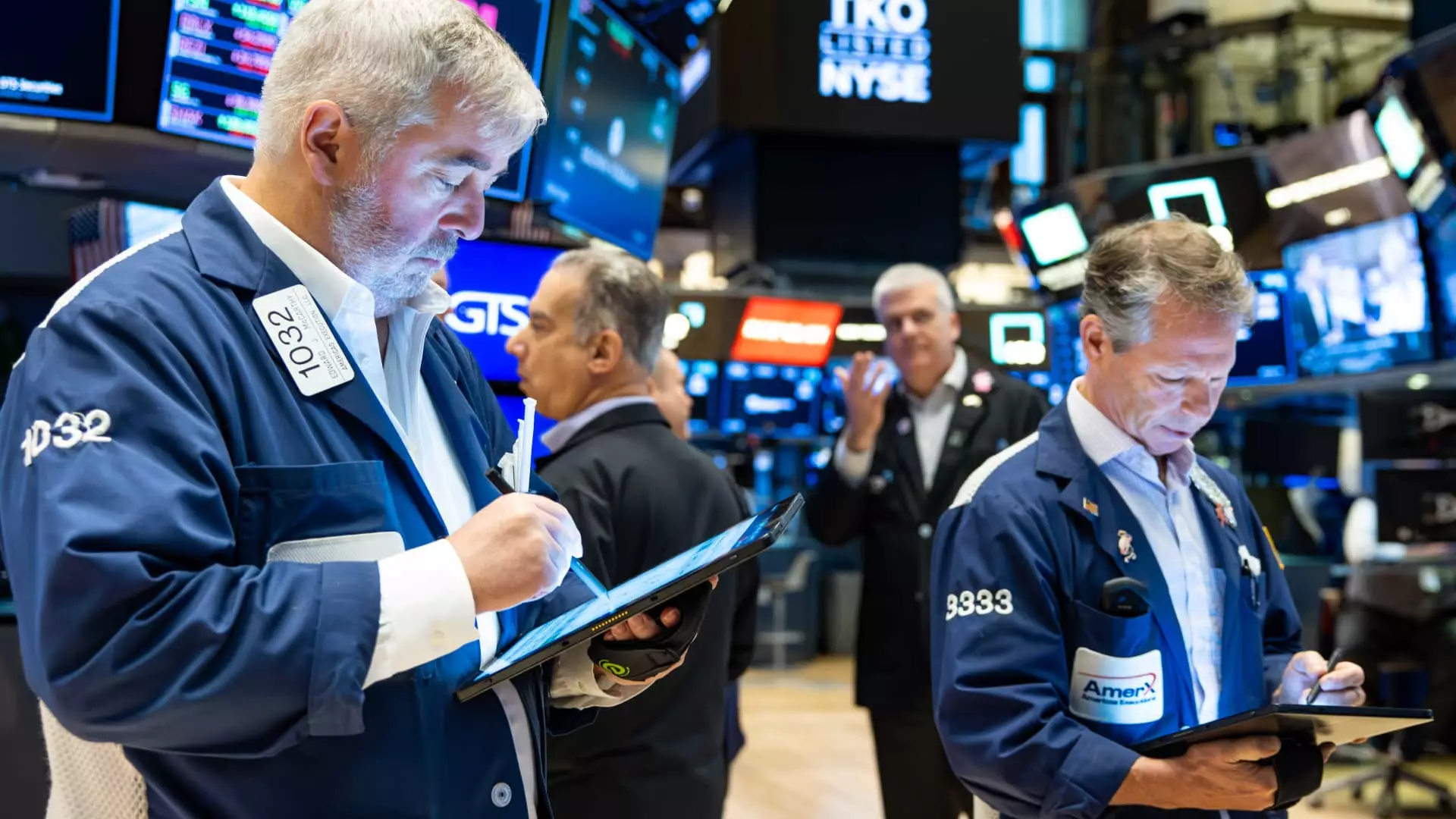As the Thanksgiving holiday approaches, the financial markets are experiencing a nuanced environment shaped by shifting political and economic tides. On a recent Tuesday morning, the S&P 500 and the Nasdaq Composite index displayed modest gains. Investors reacted to President-elect Donald Trump’s announcements regarding new tariffs targeting imports from Canada, Mexico, and China. In contrast, the Dow Jones Industrial Average experienced a slight downturn. This divergence underscores the complexities investors face as they navigate both holiday-induced volatility and political developments that can swiftly alter market sentiments.
Investors often approach the Thanksgiving week with a specific strategy: buying shares midweek and capitalizing on the post-holiday trading bounce. However, this year, financial analyst Jim Cramer recommended a more cautious stance. The uncertainty surrounding potential statements or social media activity from Trump has led Cramer to advise investors to hold off on making trades this week. He emphasized the importance of focusing on fundamentally sound stocks rather than getting caught up in seasonal trends, a point that underscores the critical nature of strategic decision-making in uncertain times.
Within the broader market context, individual sector performance also revealed contrasting narratives. Notable laggards—Best Buy and Stanley Black & Decker—experienced significant share price declines. Best Buy’s stock dove by 8% following an uninspiring earnings report. Although a detailed analysis from Cramer’s team is anticipated, the immediate market reaction signals a serious concern regarding consumer demand and operational resilience in a fluctuating economic landscape.
Stanley Black & Decker was also in the spotlight, witnessing a 3.5% drop in share value. Investors are assessing the implications of potential tariff increases on the company’s operations in China, signaling a broader concern about international trade relations and their ripple effects on American corporations. Despite the downward movement, Cramer maintained a positive outlook on the toolmaker, emphasizing a long-term hold strategy. This showcases the importance of maintaining composure and strategic foresight in volatile sectors, especially those sensitive to international trade policies.
In a contrasting success story, Wells Fargo saw its stock rise by 0.6% based on reports suggesting that the bank could potentially lift its asset cap—established due to a history of misconduct—by the first half of 2025. While confirmations are still pending from the bank itself, the prospect of shedding these restrictions is vital for Wells Fargo’s recovery narrative. The asset cap, imposed in 2018, has been a significant hurdle in the bank’s path to regaining its competitive edge in the financial services sector.
Cramer expressed a measured optimism regarding this development, but he also urged investors to exercise caution during this positive news cycle. His advice to wait for a more favorable entry point into Wells Fargo’s stock reflects a prudent approach to investment timing, highlighting the continuous need for vigilance in investment strategies.
On the flip side of the spectrum, Morgan Stanley faced a rough day as shares fell over 2%. The predicament stemmed from a Wall Street Journal report exposing serious deficiencies in risk controls within the firm’s wealth management division. Coupled with a downgrade from HSBC, which shifted its outlook from ‘buy’ to ‘hold,’ it seems that Morgan Stanley is grappling with critical operational challenges. Cramer’s critical take on the stock’s current valuation—suggesting a need for a further reassessment before considering any purchases—underscores the market’s demand for transparency and sound risk management practices.
The insights derived from Tuesday’s market activities reflect a broader narrative of caution amid volatility. With traders approaching the holiday with traditional strategies, Cramer’s recommendations emphasize the necessity of adaptability in an often unpredictable financial landscape. Whether it’s navigating potential trading pitfalls associated with government policy or evaluating individual company performance, the overarching message remains clear: diligent analysis and strategic positioning are essential for investors seeking to thrive during uncertain periods.

